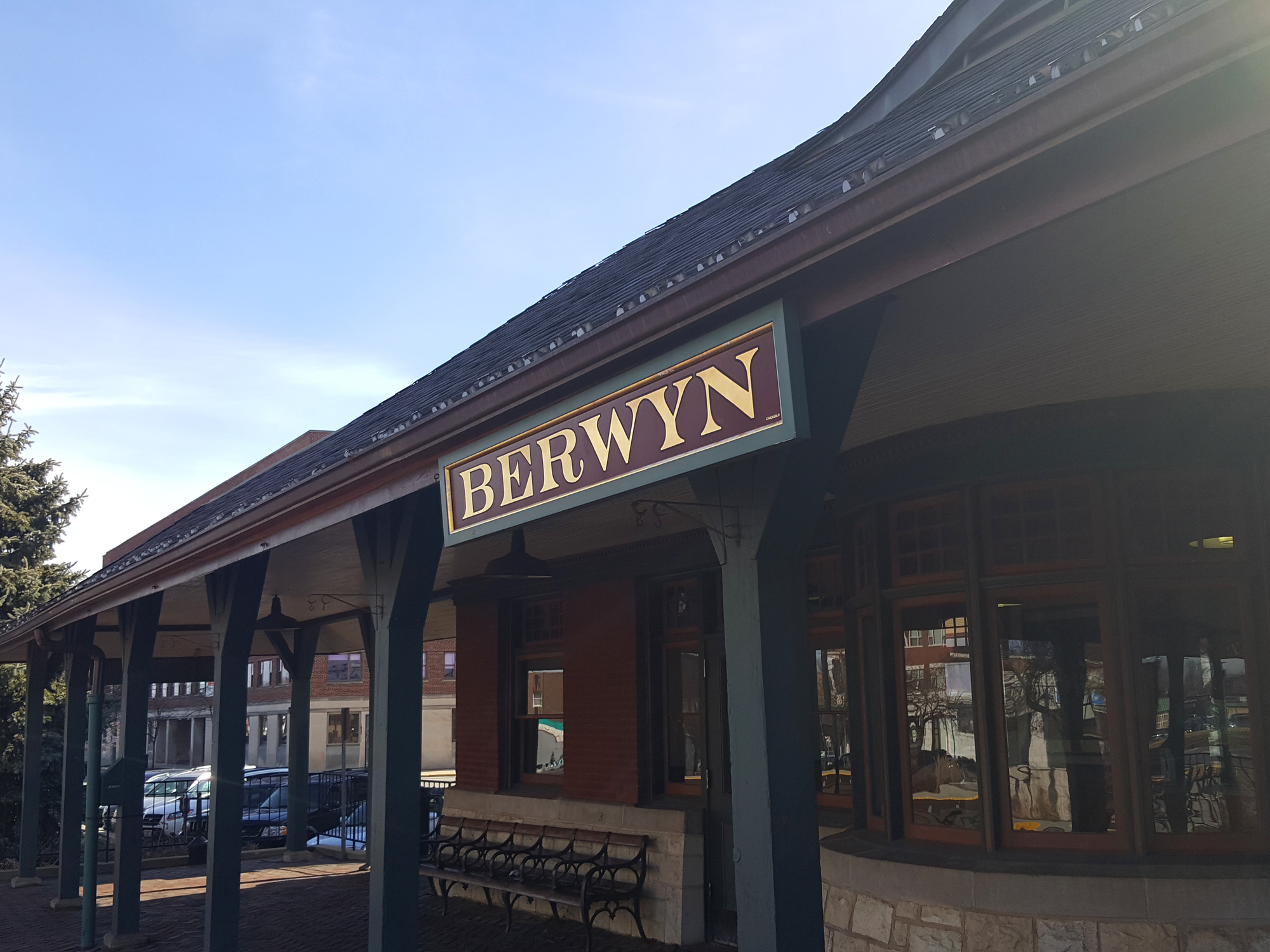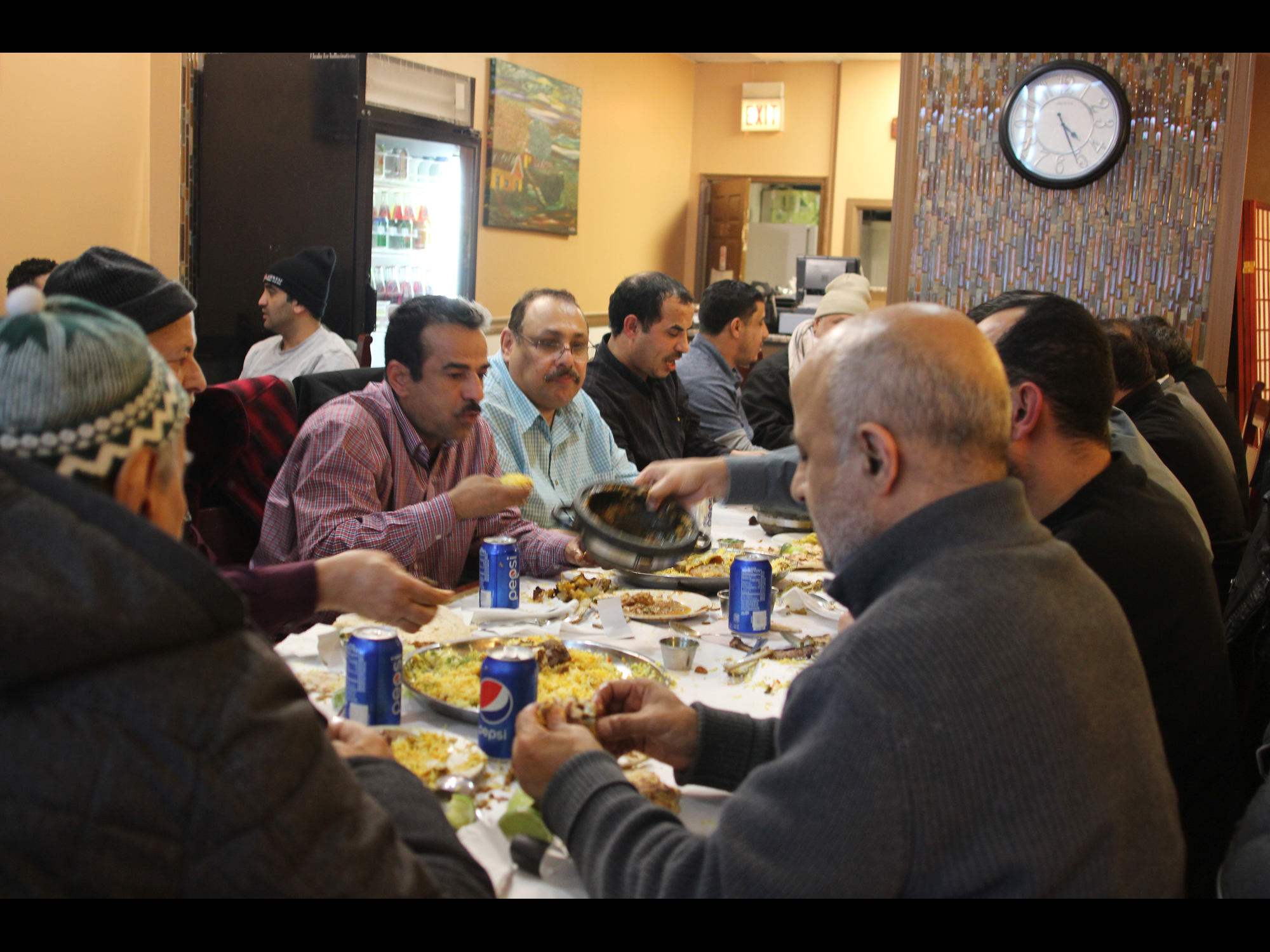TO EXPLAIN HOW I CAME TO EAT SAUDI food for lunch in an Indian restaurant with Bosnian cevapcici on its sign, let’s start, briefly, with a little sociology of real estate. I read an article once that said that Woodfield Mall had made Schaumburg wealthy, and life much tougher for all the suburbs around it—without prosperous retailers to pay local taxes. So the mall sucks in all the big names, the Targets and Best Buys, and then the next tier, the Mattress Worlds and Auto Zones, wind up on the busier streets, and what’s left for the strip malls on the not-so-busy, a-little-out-of-the-way, between-nothing-and-nowhere-special streets?
The answer is on a strip like Elmhurst Road, running north-south along the western edge of Des Plaines and into Mount Prospect. (For the suburbanly challenged, this is basically the area you pass by on the Kennedy if you don’t get off at O’Hare.) What you get on a strip like this is immigrant businesses. There are Korean restaurants where you cook it yourself at the table, and a Turkish grocery, and a number of Bosnian restaurants, and Indian restaurants and a place called Desi Market 2 and pretty soon, once you pass into Mount Prospect, much of the most authentic Japanese food in the area. What looks at first glance like the most generic suburbia is in fact as dense and diverse as anywhere in the Chicago area—a Maxwell Street for the suburban sprawl age.

Look closely at the Coca-Cola sign
I PULLED INTO A STRIP MALL, IN front of Hong Gong Kitchen and Paleterias Michoacanas, to check out a Bosnian cevapcici place, Saray Grill. And the first thing I noticed was… it wasn’t a cevapcici place any more, except in the etymological sense that cevaps are kebabs.
But instead of offering grilled Bosnian sausages, it seemed to be Indian… or Middle Eastern, it wasn’t exactly clear. The windows advertised “kebabz” [sic], biryani, and shawarma, among other things. Too many areas represented is usually a recipe for fusion mediocrity, but I decided to give it a try anyway.
Inside it was a brightly painted cafe with just a single table of customers, who looked Indian; so did the staff, and for that matter, so did the specials, which included biryani and chicken tikka. The greeting was… diffident, perhaps. Not so much that they were surprised to see me there, as that I was such an anomaly that they kind of didn’t notice me at all, until I sat myself and began studying the menu.
I noticed an unfamiliar word on the menu, kabsa. It sounded—Lebanese, maybe? Well, unlike on Maxwell Street in 1910 we have encyclopedias in our hands, so I looked it up on my phone. A Saudi chicken dish. I was instantly sold—when did you last have Saudi for lunch? As I ordered it the server, or possibly owner (he was), made sure I knew that it was a whole piece of chicken—a leg/thigh. (As opposed to the kabsa I knew so well from Saudi Arabia, I guess—which to judge by the internet’s pictures seemed to be chopped pieces of chicken, sort of scalloped.)
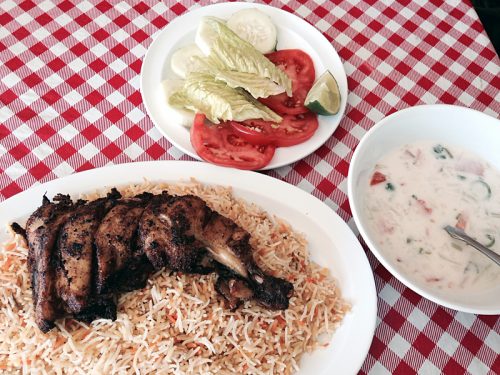
Chicken kabsa. with raita
It came a bit later with the leg/thigh on a pile of basmati rice, accompanied by raita, a thin yogurt or kefir sauce with tomatoes, onions and slices of jalapeño in it. I asked the server/owner what I was supposed to do with the raita, and he said to spoon it into the rice, “very good.”
It was. The spicing on the chicken was unmistakably Indian in a straightforward way—black pepper and cardamom, mainly. Eaten with the rice and the raita, it was a satisfying dish, simple in design but complex in flavor. Halfway through, they brought me some hummus, made in house (and grainy, like mashed potatoes that still have bits of potato—the way I like ’em!) and pita. The more interest I showed in the food, the more interest they showed in me having wandered in.
Which meant I was ready to just flat out ask—what kind of restaurant was this, exactly, and how did it come to have so many different kinds of food from so many places?
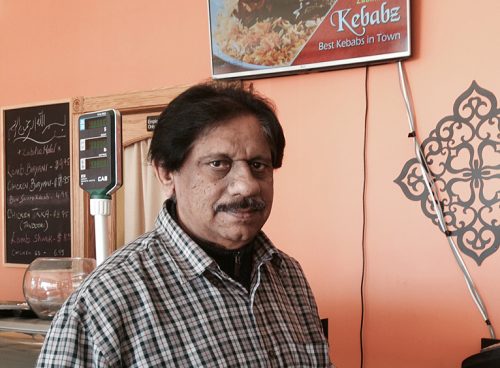
Owner Shujat Khan
THE OWNER, SHUJAT KHAN, IS FROM Hyderabad, but when I asked how he had a Saudi dish on his menu, he explained that he lived in Saudi Arabia for thirty years—he co-owns a company that sells pipe fittings, here and there, which is probably a pretty good business in an oil-producing country. So how did he go from that to this restaurant? “I always loved cooking,” he said. “When I would go fishing with friends, I would cook and they all loved my cooking. So I wanted to have a restaurant.” Given where he spent so many years, it’s not surprising that it covered the ground from the lamb biryani of his native Hyderabad to kebabs and other Arabic dishes (we’ll pass over the Angus Burger without further comment).
He took over the cevapcici place about six months ago. I asked him what his customer base was, and he said “Indians, many Arabic people, and Russians,” gesturing toward a table that had sat down in the meantime. I’d heard them say they spoke Uzbek, but I guess for his purposes, “Russians” was close enough. (“Uzbek” perked me up, though—one of my foodie goals is to get to the parts of Brooklyn where Uzbek, and even Uzbek-Korean fusion, is more common than hot dogs. New York food writers have chronicled that food subculture intensely; here was an area something like it in our own backyard, much less explored by our own fooderati.)
But the thing Mr. Khan most wanted me to know was what I already pretty much knew from eating his food—it was scratch cooking back there, which for him particularly meant using fresh spices, not “out of a box,” as he said. “In many restaurants, the lamb has a smell, of mutton,” he said. “But we use the Indian spices so you don’t have the lamb smell.”
He told me he wanted me to try something else and excused himself. A few minutes later he came out with a bowl of soup, a thick meaty brown but ringed by a yellow tinge from the spices dyeing the oil floating on top. “We make this lamb soup, and serve it by itself or with the lamb shank,” he explained. “We roast the lamb bone, brown it in the oven for four hours, and then we make the soup.”
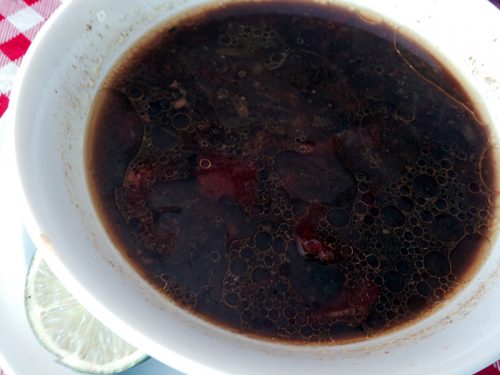
“We brown the lamb in the oven,” as if you could doubt it from the stock
I tried it. It was thick, meaty, unbelievably rich, like beef gravy on Yorkshire pudding, save for the (milder than I expected) Indian spices. I’d liked the chicken kabsa quite a bit, but this was outstanding, with all the virtues of scratch cooking and long deliberate hours of preparation. Here was an owner-cook who’d carved out his own little slice of the planet’s cuisine, reflecting his own life’s history, and served it up with care—in a strip mall in a suburb on a street that holds more surprises than anyone quite knows.
Michael Gebert roams suburbia as editor of Fooditor.
Latest
Join the Discussion
After you comment, click Post. If you're not already logged in you will be asked to log in or register with Disqus.






